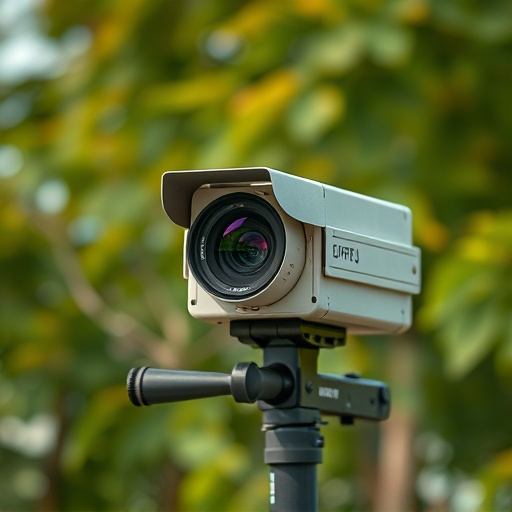Secure dummy cameras with robust brackets and hidden mounts to prevent theft. Mount cameras firmly, align fields of view, and set motion detection for optimal deterrence. Regularly test connections, image quality, and maintain security against theft for reliable functionality.
Secure your space with a mock surveillance system—a cost-effective way to enhance security without breaking the bank. This comprehensive guide walks you through setting up a realistic security scenario, from understanding the benefits of dummy cameras to preparing your location and mounting devices discreetly. Learn how to configure settings for optimal protection and test your system’s integrity. Plus, discover essential maintenance tips to ensure your mock surveillance remains a formidable deterrent against theft.
- Understanding Dummy Camera Security Measures
- Preparing Your Location for Installation
- Mounting and Configuring the Cameras
- Testing and Maintaining Your Mock Surveillance System
Understanding Dummy Camera Security Measures
When setting up a mock surveillance system, it’s crucial to understand that secure dummy cameras against theft are an essential part of maintaining the authenticity of your setup. While these cameras don’t capture real footage, protecting them from unauthorized removal or tampering ensures the integrity of your simulation environment. To safeguard your dummy cameras, consider the following steps: first, ensure they are securely mounted in fixed positions, using brackets or mounts designed to resist dislodging forces. Additionally, implement visible deterrents like alarm stickers or signs that indicate the presence of security systems to dissuade potential thieves.
Preparing Your Location for Installation
Before installing your mock surveillance system, it’s crucial to prepare your location meticulously. Clear any obstructions that might interfere with camera placement for optimal visibility. Ensure all dummy cameras are securely mounted and protected against theft; this can involve using sturdy brackets or even hidden mounting methods to make them less vulnerable to being removed or tampered with. Consider the lighting conditions at the site; ideal illumination enhances the system’s effectiveness. Arrange the setup in a way that mimics real surveillance, positioning the cameras at strategic angles to capture a comprehensive view of the area.
Prepare your location by checking for any potential blind spots where intruders could hide. Regularly test the functionality and placement of each dummy camera to ensure they remain in position and provide accurate readings. By preparing your location thoroughly, you’ll create an immersive simulation that serves as an effective deterrent and provides peace of mind regarding the security of your premises.
Mounting and Configuring the Cameras
When mounting and configuring your mock surveillance system, it’s crucial to ensure that your dummy cameras are securely installed and properly positioned for optimal visibility. Start by selecting sturdy mounts that can withstand outdoor conditions if applicable, securing them firmly to walls or structures. For added protection against theft, consider using lockable mounts or hiding the camera connections out of sight to prevent tampering.
During configuration, align each camera’s field of view to cover key areas you want to monitor. Adjust the zoom and angle as needed for clear, detailed images. Remember to set up motion detection settings to minimize false alerts while still capturing relevant footage when activity is detected. This meticulous process ensures your mock surveillance system not only looks realistic but also functions effectively in deterring potential intruders.
Testing and Maintaining Your Mock Surveillance System
After installing your mock surveillance system, it’s crucial to test its functionality thoroughly. Start by ensuring that each dummy camera is securely mounted and positioned for optimal visibility. Check if they are properly connected to the control unit and monitor the live feed on your computer or mobile device to verify clear images. Test all motion detection sensors to confirm accurate triggering, which can help deter potential thieves.
Regular maintenance is equally important. Keep an eye out for any loose connections or damaged components. Secure dummy cameras against theft by hiding them strategically and ensuring they are not easily accessible. Regularly update the software to fix bugs and improve performance, enhancing your system’s overall reliability and effectiveness as a deterrent.
Securing your dummy cameras against theft is a crucial step in setting up an effective mock surveillance system. By following the steps outlined in this guide, from understanding the measures to preparing and testing your location, you’ll create an immersive deception that discourages potential intruders. Remember, a well-installed and maintained system can significantly enhance your property’s security while providing peace of mind.
